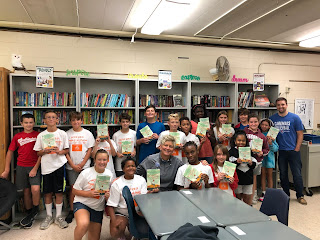Worthington Schools, Worthington Enterprises, and Worthington Steel have forged a workforce industry partnership to equip students with practical skills and experience in the manufacturing sector. This partnership began in 2019 and we are proud to share that it continues with six of our students currently participating and soon to graduate in this immersive program during the second semester of their senior year in high school.
Congratulations to the following students;
Kaleb Effinger (TWHS) - Competed Westerville Cylinders Program and will be pursuing a tech certification/college
Aiden Llewellyn (TWHS) - Completed Westerville Cylinders Program and will be attending college
Connor Dunn (Worthington Academy) - Completed Columbus Steel Program and has accepted full-time employment with Worthington Steel
Brandon Reyes Campos (WKHS) - Completed Columbus Cylinders Program and has accepted full-time employment with Worthington Enterprises
Alex Beyke (WKHS) - Completed Columbus Cylinders Program and has accepted full-time employment with Worthington Enterprises
Stoyan Solis (WKHS) - Completed Columbus Steel Program and has accepted full-time employment with Worthington Steel
These students are currently stationed in various departments, including Columbus Cylinders, Westerville Cylinders, and Columbus Steel, gaining hands-on experience in real-world work environments. The collaboration between Worthington Enterprises, Worthington Steel, our High School School Counseling Teams, and Worthington Schools is intricately designed to prepare these students for successful careers in manufacturing post-graduation. Beyond on-the-job training, students in this program have the option to continue working for Worthington Enterprises or Worthington Steel while also having the opportunity to secure college scholarships through a focused curriculum. The internship encompasses a range of activities, from plant safety and machine simulation and use to relationship building, teamwork, communication, presentation skills, finances, problem-solving, conflict resolution, de-escalation training, blueprints reading, OSHA training, and in-depth learning about steel and cylinder mechanics. This comprehensive approach ensures that students not only gain technical expertise but also develop essential soft skills crucial for success in the dynamic manufacturing industry.
We extend our gratitude to Worthington Enterprises and Worthington Steel for their invaluable partnership with Worthington Schools. We are committed to preparing students for a successful future by offering a comprehensive education that not only equips them with the academic knowledge needed for college but also fosters practical skills essential for thriving in various careers and workforce. Through this innovative partnership and others, we are ensuring that our students are well-rounded individuals who are ready to excel in their chosen paths after graduation.
We are “empowering a community of learners who will change the world!”
-Angie Adrean
Assistant Superintendent, Academics
Worthington Schools






